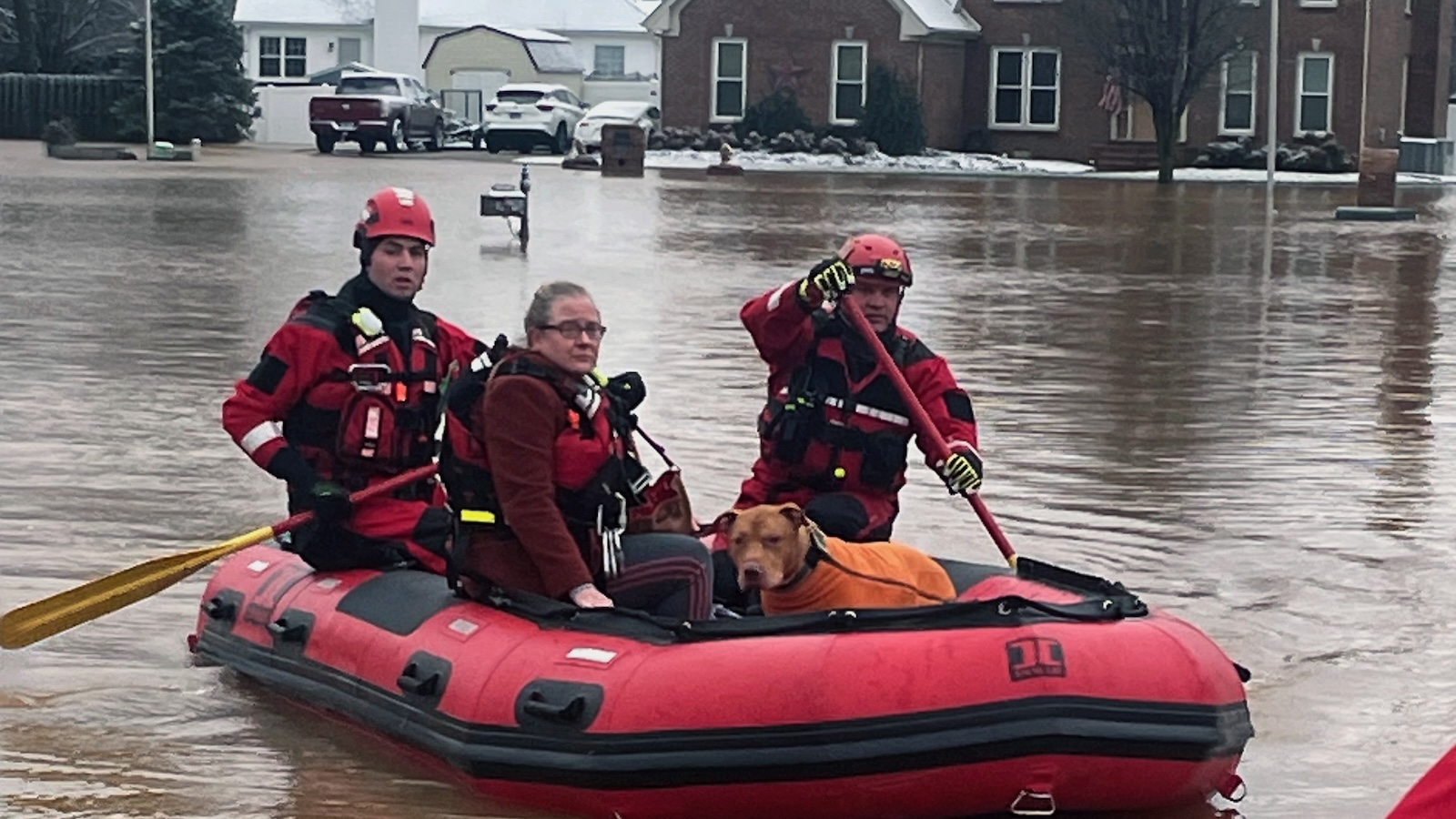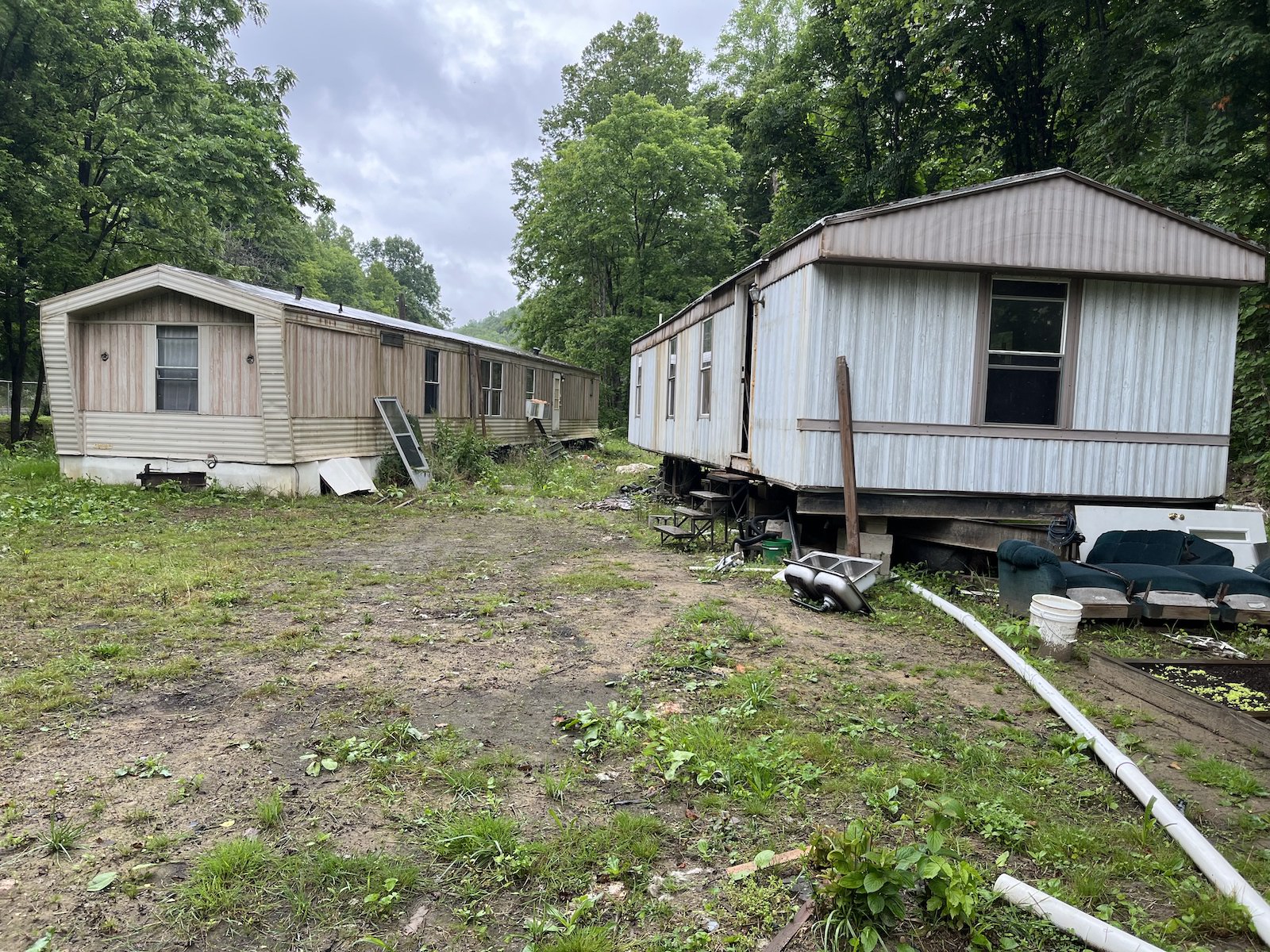When the rivers and creeks running through eastern Kentucky jumped their banks and flooded a wide swath of the region for the second time in as many years, Cara Ellis set to work.
One week later, she’s hardly let up. Ellis has spent countless hours helping friends in her hometown of Pikeville evacuate and delivering supplies to people who have lost their homes. “I’ve been here, there, everywhere in the county,” she said. “It’s overwhelming. There’s been a lot of devastation.”
Ellis spoke during a brief moment of rest in the chaos. Her home was spared when storms brought torrential rain to central Appalachia during the weekend of February 15. The water came down so quickly that the Levisa Fork of the Big Sandy River soon inundated houses and a portion of downtown. The torrent prompted more than 100 rescues in Pike County alone and left several neighborhoods and rural communities without running water. The record-setting winter flood, which killed 21 people statewide and two others in West Virginia, was not the first time Ellis has seen a disaster strike, and she fears it won’t be the last.
“We know there’s going to be a next time,” she said.
More than 8 inches of rain doused Kentucky, Virginia, West Virginia, and Tennessee, soaking already sodden ground. The resulting inundation came less than three years after flooding throughout eastern Kentucky killed more than 40 people and caused hundreds of millions of dollars of damage across 13 counties. Hurricane Helene brought similar inundations to western North Carolina, southern Virginia, and eastern Tennessee just six months ago. The extreme weather fueling these floods will only grow more common as the world warms.
“These unprecedented storms really do represent our new reality,” said Nicolas Pierre Zegre, a forest hydrologist at West Virginia University who studies flood adaptation in the region. “Acknowledging that things have been changing kind of opens up the door on other conversations, like why are things changing?”
The severity and frequency of these floods has accelerated. Climate change brings ever more extreme precipitation, which causes flash flooding as it soaks mountain slopes and narrow valleys. All of Appalachia is vulnerable, and the places at greatest risk are rural communities that can quickly find themselves isolated by landslides, downed trees, and inundated roads.
Even if help is on the way, it may not come quickly. That has promoted people to step in, an informal response that has grown more organized with each crisis. “We all need to be our own first responders because these things are happening really really fast,” Zegre said.
Willa Johnson, a lifelong eastern Kentuckian, lived in McRoberts when the 2022 flood overturned her life. She fled rising water, and returned several days later to find her home had been destroyed, along with her church, her son’s school, and the arts and culture center where she worked. And now, this. She wasn’t flooded this time, but seeing neighbors suffer again weighs on her. “These last few years have been brutal,” she said. “It changes the landscape, it changes the people.”

Clarksville Fire Rescue via Getty Images
Still, she and others throughout the area feel their experience has prepared them to face future disasters with strength, and, when other rural communities go through the same experience, understand what they face and how best to help them. “It weighed heavy on us here” when Helene hit North Carolina, Johnson said.
She organized supply drives for Helene survivors and sought donations outside Walmart, where those who endured the 2022 flood offered what they could. “Someone who lost their entire home would hand us $10 out of their pocket and say, ‘We know what it’s like,’” Johnson said. Volunteers loaded cars with medical supplies and water and propane heaters and drove to the remote corners of western North Carolina. They called the initiative It’s Our Turn EKY, as in, it’s our turn to help.
This week, it was North Carolina’s turn to help. Volunteers with the nonprofit BeLoved Asheville drove a truck full of supplies to Perry County. The City of Asheville Fire Department dispatched a its swiftwater rescue team to help pull survivors from homes in Hazard.
“It’s really exhausting to feel we are just going from one disaster to another constantly and people don’t have time to feel tired anymore,” Johnson said, her voice thick with emotion. “But it’s also really beautiful because these groups that we were contacting and saying, “What do you need? ‘How do we get this to you?’ are now reaching back out and saying, ‘Here’s what we have. Here’s what we can send.’ It’s this system of mutual aid that just keeps crossing state lines and people just reaching out to each other.”
Chelsea White-Hoglen, a community organizer in Haywood County, North Carolina, has been helping coordinate runs to eastern Kentucky and west Virginia. She said people through Appalachia increasingly understand the challenges of rural disaster relief, and the difficulties facing communities where much of the population is elderly, disabled, or living in poverty, and tight town budgets struggle to handle aging infrastructure. State and federal officials do what they can, but they often lack first-hand knowledge of what communities need. “These networks and human-to-human relationships are going to be the strongest and most reliable when we confront these kinds of catastrophes,” White-Hoglen said.
These networks grow stronger with each disaster as volunteers like Johnson find better, more efficient ways of bringing together those who need and those who can provide it. They’ve started using Google forms to bring donors and recipients together. They’ve organized donation drop-off locations and delivery caravans. They’ve designated community resource hubs like churches and warehouses where folks can go for help. They create and manage schedules so people don’t burn out. These volunteer-driven efforts have started working with local officials to identify needs and fill them, because they’re in the best position to know.
“I’m glad that we are learning as we go,” Johnson said.
Cara Ellis said the floods have helped her appreciate the solidarity that comes from repeated experiences with disaster across the region. As she’s seen mountain infrastructure buckle under more and more intense storms, she says, neighbors will need to have these networks and supply lines organized and ready to go.
“From my perspective, climate change is very real and we are the brunt,” Ellis said.
“It’s just what are we gonna do next time to be more prepared, and what does that look like?” Ellis added. It’s out of necessity that ordinary people need to look out for one another.”Because at this point, it feels like nothing’s being done on a global scale or even on a federal scale to prevent these disasters.”
Note: Katie Myers worked with Willa Johnson at Appalshop, a nonprofit media, arts, and education center in Whitesburg, Kentucky, from 2021 through 2023.
This story was originally published by Grist with the headline ‘We know what it’s like’: How Appalachian towns are learning to help each other after floods on Feb 25, 2025.
From the Kentucky floods to Helene and back again, people throughout Appalachia are using their experiences to help others through disaster. Extreme Weather, Solutions Grist





